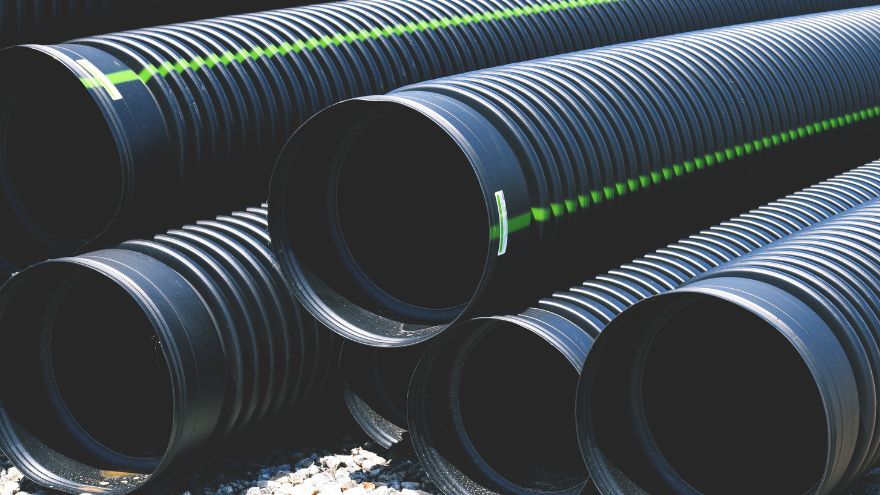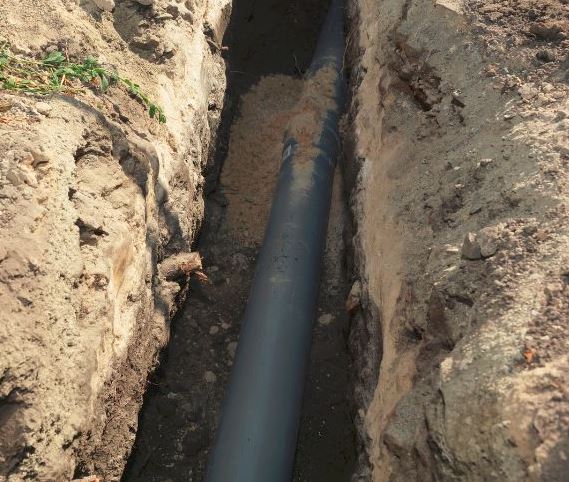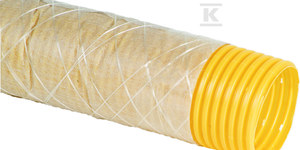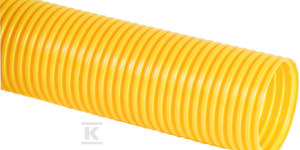If we want to drain a building, we need a special type of pipes - drainage pipes . They are designed to cope with these specific conditions. Let's find out the most important information about them! Let's learn key information, especially the depth at which they should be planted. At the end of the article, we will recommend several types of drainage pipes.

What is a drainage pipe?
A drainage pipe is a special type of pipe intended strictly for use in underground drainage systems. What we mean here is especially the use of band drainage, which is necessary in many cases. This necessity arises, for example, when we build a house with a basement on soil containing impermeable clay and loam. The same applies to houses built on a slope. Drainage is also a mandatory task for every investor renovating an old house where drainage either does not exist or is in a terrible condition. Its symptoms are often damp walls or a periodically flooded basement, especially after snowmelt. Drainage pipes effectively solve this problem by draining excess water from the area around the building. In this way, walls and foundations are protected against moisture. But they have much wider applications, because they are also successfully used for drainage of fields and meadows, airports, tracks, roads, parking lots and large industrial areas.
Check drainage pipes at the Onninen wholesaler
How deep should drainage pipes be buried?
 There is no doubt that drainage pipes are useful in countless situations, but it is crucial to plan and perform drainage well. The issue related to the depth at which we should bury the drainage pipes is very important. The beginning of the pipe that is furthest from the collecting well should be placed approximately in the middle of the foundation footing. It is recommended to place them in the ground at a depth of 60-70 cm. You can go a little deeper, but a maximum of 80 cm. They cannot be placed too shallow, as this may negatively impact the system's performance. Worse yet, it may also contribute to increasing the humidity of the substrate and, consequently, capillary action through the building walls.
There is no doubt that drainage pipes are useful in countless situations, but it is crucial to plan and perform drainage well. The issue related to the depth at which we should bury the drainage pipes is very important. The beginning of the pipe that is furthest from the collecting well should be placed approximately in the middle of the foundation footing. It is recommended to place them in the ground at a depth of 60-70 cm. You can go a little deeper, but a maximum of 80 cm. They cannot be placed too shallow, as this may negatively impact the system's performance. Worse yet, it may also contribute to increasing the humidity of the substrate and, consequently, capillary action through the building walls.
Other factors are equally important. We also cannot forget about the declines, which should be approximately 0.5-1.5%. Remember to place a layer of aggregate at the bottom of the excavation. River sand with a thickness of about 25-30 cm works great here. Once we have done this, we can unfold the perforated pipes and connect them appropriately with special connectors. However, let's make sure that there are not too many of them. We will limit them by using pipes 20-50 m long.
Drainage pipes at the Onninen wholesaler
 There are various drainage pipes available for sale, and the most common division concerns the materials from which they are made. These are mainly polyvinyl chloride (PVC), polyethylene (PE) and ceramics (e.g. stoneware). Nowadays, plastic pipes are most often used because they have many advantages, such as durability, low weight and ease of installation and transport. Regardless of what type of drainage pipes we need, we can be sure that we will buy them at the Onninen hydraulic wholesaler.
There are various drainage pipes available for sale, and the most common division concerns the materials from which they are made. These are mainly polyvinyl chloride (PVC), polyethylene (PE) and ceramics (e.g. stoneware). Nowadays, plastic pipes are most often used because they have many advantages, such as durability, low weight and ease of installation and transport. Regardless of what type of drainage pipes we need, we can be sure that we will buy them at the Onninen hydraulic wholesaler.
One of the interesting options are Kaczmarek drainage pipes with a coconut fiber filter . Designed for light drainage - ideal for soaking up rainwater,  drainage of meadows and arable fields. They have a wavy yellow shape and profiled both internal and external surfaces. Another one worth considering is the Kaczmarek drainage pipe with a PP filter - fully seeping, with perforation holes around the entire circumference (TP variety).
drainage of meadows and arable fields. They have a wavy yellow shape and profiled both internal and external surfaces. Another one worth considering is the Kaczmarek drainage pipe with a PP filter - fully seeping, with perforation holes around the entire circumference (TP variety).
 Kaczmarek drainage pipes without perforation holes are also available , PVC DN/OD . Yellow corrugated, just as durable because it is made of high-quality PVC.
Kaczmarek drainage pipes without perforation holes are also available , PVC DN/OD . Yellow corrugated, just as durable because it is made of high-quality PVC.
Drainage pipes are a mandatory and extremely important part of every investment. However, it is important to choose them well, taking into account the needs and design requirements. Drainage pipes are a mandatory and extremely important part of every investment. However, it is important to choose them well, taking into account the needs and design requirements. This ensures that the drainage system will function flawlessly. When placing them, do not forget about the appropriate depth, because this parameter is of great importance. It cannot under any circumstances be ignored.